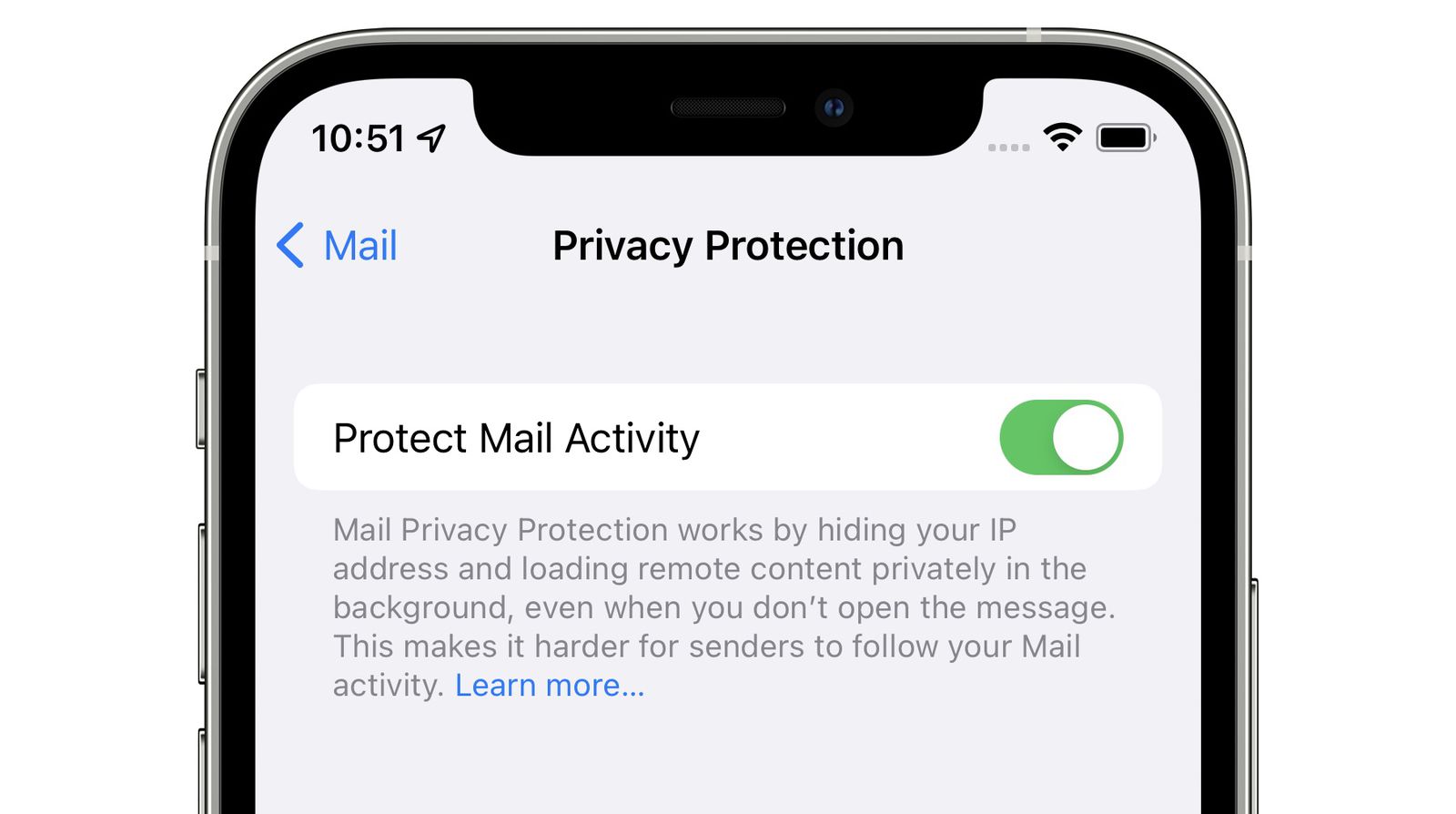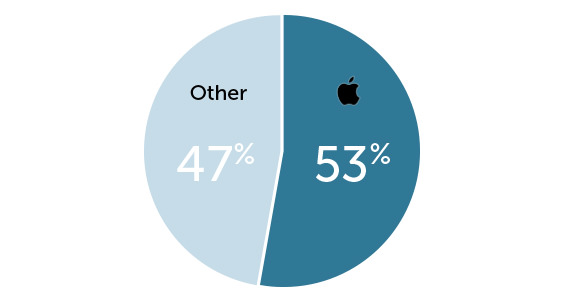How to Build a Digital Marketing Strategy Post iOS 15

Share this story
B2B digital marketers, rejoice! All hail Apple’s Mail Privacy Protection! I can hear the crickets through the blog, so allow me to explain. Back in September of this year, Apple launched its iOS 15 update that included its new Mail Privacy Protection feature. Once an Apple user activates this protection in their Mail app, marketers will see a heavy increase in their email open rates. This inflation will essentially render open metrics useless — and that is a good thing! Marketers can now create a digital marketing strategy that focuses on database quality and accuracy, interaction, compelling content and, overall, the creation of relevant marketing.
I Speak Android; What’s Going on With Apple?
On September 20, 2021, Apple released its iOS 15 update to the public. The update will affect Apple Mail apps on iOS 15, iPadOS 15 and soon Macbooks operating on macOS Monterey. The new software includes new privacy features that help protect user information. The Mail Privacy Protection option hides users’ IP addresses — senders can no longer see a user’s location or link the IP address to other online activity — and blocks senders from tracking if / when their email was opened.

Once iOS 15 is downloaded, Apple users will be prompted to choose “protect mail activity” or “don’t protect mail activity.” This activation will only pertain to emails within the Apple Mail app. Separate email apps — like the Gmail app — will not be affected by this update. From here, according to Litmus, Apple will download all the email images and create a copy of those images to exist in a new location on the Apple Privacy Cache. The image download is what fools the sender’s email service provider into thinking the email was opened. If the email’s recipient actually wants to open the email, the information downloads from the privacy cache. As a result, email marketers can no longer use pixels to decipher who opened their emails, at what time or from where.
Take a Deep Breath
Okay, yes, according to Litmus’ 2021 State of Email Engagement, Apple mail makes up over half of all email clients (53%).

And yes, the Mail Privacy Protection feature blocks locations and open times, so goodbye to geotargeting and send-time optimization.
And sure, with opens irrelevant, A / B testing, automated journeys and re-engagement campaigns are a thing of the past.
And, oh! Did we mention for an additional fee, Apple users can sign up for Hide My Email — a service that keeps their personal email addresses private even when they are signing up for newsletters or exchanging emails with someone they don’t know well?
Don’t Stress; Strategize
This evolution of online privacy protections was inevitable. It is time to create a digital marketing strategy that builds trust with your B2B customers. Here are some areas of focus that will have you and your email marketing team ready for this privacy protection feature now and for policies in the future.
Database Quality and Accuracy
Keeping your data spick and span is the best defense for any new data protection or ban. The Mx Group’s senior director of digital marketing and demand operations, Matt Binz, shared with Demand Gen Report for its State of Database Quality and Accuracy report, “The more rigor and process you have behind how your data sources are organized, how they’re working and what pieces of information are coming in will increase the success of brand management. An aligned source will go a long way to improve the quality of what you’re collecting and take corrective action if there are any privacy issues.”
Demand Gen Report research shows that 68% of marketers have outdated data and 44% do not have enough data on existing customers. Then, there is the challenge of navigating the other side of the spectrum for marketers who have an overabundance of data that is collected through websites, social media and other entry points. Binz suggests first cleaning up the existing data with the age ol’ tool of telemarketing. “We (The Mx Group) get a lot of good results out of it, as it provides insights into the quality and validity of databases,” said Binz.
The more rigor and process you have behind how your data sources are organized, how they’re working and what pieces of information are coming in will increase the success of brand management
As for the excess data, make sure your digital marketing strategy includes a discussion on the types of data points you want and how long you want to keep them. A plan should be in place for when / what to archive and what data simply needs to be purged from the system. When cleansing email lists for campaigns, a regular process should be implemented that reports on the age of data, the customer engagement levels and the last time the data was verified. This process helps avoid inactive accounts, unengaged users or multiple sends to duplicate addresses.
Track Clicks, Not Opens
The power of a good subject line cannot be denied in email marketing. However, the energy spent A / B testing needs to be rerouted toward something that can still be tracked: clicks. A valuable way to continuously test the strength of your digital marketing strategy is to analyze how customers are engaging with your content. Are they clicking on links to read your posts, view your capabilities or learn about your work? If they are not, it’s a good indication that something needs to be tweaked in terms of relevancy, personalization or the content itself.
Create Compelling Content
Speaking of content, it’s still king in our book. A good digital marketing strategy that incorporates relevant, compelling content will not only get customers opening, clicking and reading about your brand, but it is an excellent way to build trust, especially in the digital B2B world. We’ve discussed how the B2B buyer has changed due to digital transformation. It is now more important than ever to focus on authentic content creation that allows your brand’s message to rise above the competition with calls to action.
Trust is built over time and through multiple touchpoints of excellent customer experience. B2B buyers want to learn as much as they can about your brand and whether you, your capabilities and your experts are the best fit for their organizational needs.
As trust is earned over time, your data will become more reliable. The fear of unengaged subscribers or losing access to third-party data disappears when you have cultivated first-party and zero-party data. Zero-party data refers to the data an organization receives directly from the user. The user intentionally opts-in or proactively shares — like through a survey — information like purchase intentions or communication preferences in exchange for an offering from the organization, like an ebook. First-party data, of course, is information gained from a user visiting a website. Such data doesn’t provide information like purchase intentions, but marketers still gain relevant insights based on the user’s clicks and pages visited.
Binz suggests taking your customer on a journey that will, in addition to feeding your organization more qualified data, nurture a lasting relationship through smaller, targeted touchpoints. “Instead of bombarding a prospect or client with 10 fields at once, guide them through the website and offer one or two more fields at strategic times,” Binz said. “Over the course of a longer experience with your company, you’re building the same amount — if not more — data than you’d get in one big swoop. You really need to think about making those micro-moments or touchpoints interesting, whether it’s explicitly, such as clicking a button to take action, or implicitly, like creating a pattern out of click paths.”
In Relevancy We Trust
At the end of the emailing day, all B2B customers want to know is: Why are you emailing me? And is what you are emailing me going to help me professionally? Remembering there is an actual human person behind every account should be the foundation of every digital marketing strategy. Open-rate metrics may be receding, but what is cause for celebration is the coming of a new era in B2B marketing. An era where marketers focus on accurate databases and compelling content to build authentic connections with future clients.


